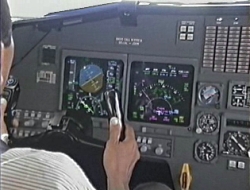MH370 Flight Path Analysis
Case Study
by Richard Godfrey, Dr. Hannes Coetzee (ZS6BZP) and Prof. Simon Maskell
30th August 2023
At 17:19:26 UTC Malaysian Air Traffic Control (ATC) at the Lumpur Radar station contacted
MH370 with a routine message: “Malaysian Three Seven Zero contact Ho Chi Minh one two zero
decimal niner good night.” Captain Zaharie Shah responded at 17:19:30 UTC: “Good night
Malaysian Three Seven Zero.” At 17:20:36 UTC, just 66 seconds later, the Mode S transponder
symbol of MH370 dropped off the Malaysian ATC radar display. MH370 had gone ‘dark’ and
disappeared into the night sky diverting back over Malaysia to the Malacca Strait according to
primary civilian and military radar data.
This case study examines the use of radio waves from the Weak Signal Propagation Reporter
(WSPR) and the historic database called WSPRnet. WSPR data can be used as a multi-static
passive radar system to detect and track aircraft, where WSPR links between radio transmitters
and receivers align with the aircraft position along a great circle path. Signal level and signal
frequency modulations can result, when an aircraft flight path intersects with the propagation path
of a WSPR link. Together with the Boeing aircraft performance data, the MAS Operations fuel and
engineering data, the weather data enroute, the Inmarsat satellite data and the drift analysis of the
41 items of possible MH370 floating debris that have been recovered from around the Indian
Ocean, a comprehensive picture of the final hours of flight MH370 can be collated.
The purpose of detecting and tracking MH370 across the Indian Ocean is to ensure the reliability
of the flight path analysis during the 7 hours 46 minutes the aircraft was in the air and therefore
the accuracy of the end point position, where MH370 ran out of fuel after 7 hours 35 minutes and
then subsequently crashed around 11 minutes later. The alignment of the WSPR analysis with the
analyses from Boeing, Inmarsat and the drift analysis from the University of Western Australia is a
significant multi-disciplinary outcome, which all point to the same crash area. There have been 41
items of confirmed or possible MH370 floating debris recovered from round the Indian Ocean.
Flight MH370 was diverted to the Indian Ocean, where it crashed after fuel exhaustion on 8th
March 2014 at some point after the last satellite signal was received at 00:19:37 UTC. At the time
of writing of this case study, MH370 still has not been found despite extensive surface and
underwater searches. Around 10 million commercial passengers fly every day and the safety of
the airline industry relies on finding the cause of every aircraft accident.








